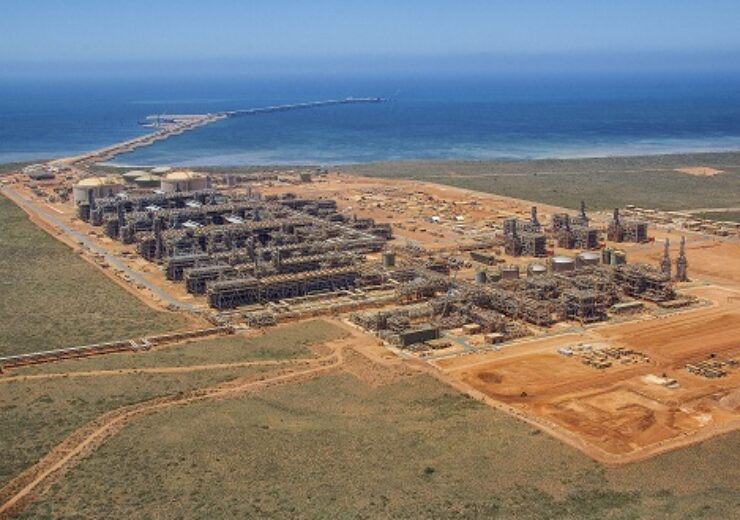Located on Barrow Island off the northwest coast of Western Australia, the Gorgon LNG project has a total of three trains with a combined capacity of 15.6 million tons per year

The Chevron Australia-operated Gorgon LNG Project in Australia. (Credit: Chevron Corporation)
Chevron’s Australian subsidiary said that the restart date for LNG Train 2 of the $54bn Gorgon LNG project has been pushed back by another month to October 2020.
The company said that it needs more time to complete repair work on the propane heat exchangers on the second liquefaction unit of the LNG project located offshore Australia.
Chevron Australia had placed Train 2 under planned maintenance in May 2020 and a restart which was scheduled for July was postponed as a routine inspection detected weld quality issues at the heat exchangers.
The company said that it wants to further refine its approach following an ongoing technical work which calls for additional work to be carried out on some welds in targeted areas.
Located on Barrow Island off the northwest coast of Western Australia, the Gorgon LNG project has a total of three trains with a combined capacity of 15.6 million tons per year.
Chevron Australia stated: “We continue to provide natural gas to the Western Australian domestic market and LNG to customers under our contractual commitments.
“We have discussed our plans with the regulator and will maintain alignment on its requirements for inspections and repairs on the Gorgon heat exchangers and the sequencing of work on Gorgon Trains 1 and 3.
“Insights gained from the Train 2 repairs will contribute to more efficient inspections and potential repairs on Trains 1 and 3.”
Last month, Chevron was allowed by the Western Australian industrial regulator to shut the Train 1 and Train 3 for inspection and carry out repairs in stages, reported Reuters. Accordingly, Train 1 is scheduled to be shut next month, while Train 3 will be shut in January 2021.
Stakeholders of the Gorgon LNG project
The Gorgon LNG Project is operated by Chevron Australia, which holds a stake of 47.3%. The other partners are the respective Australian subsidiaries of ExxonMobil (25%), Royal Dutch Shell (25%), Osaka Gas (1.25%), Tokyo Gas (1%) and JERA (0.417%).
The first cargo from the Australian LNG project was shipped in March 2016 and domestic gas supply to the Western Australian market began in December 2016.
